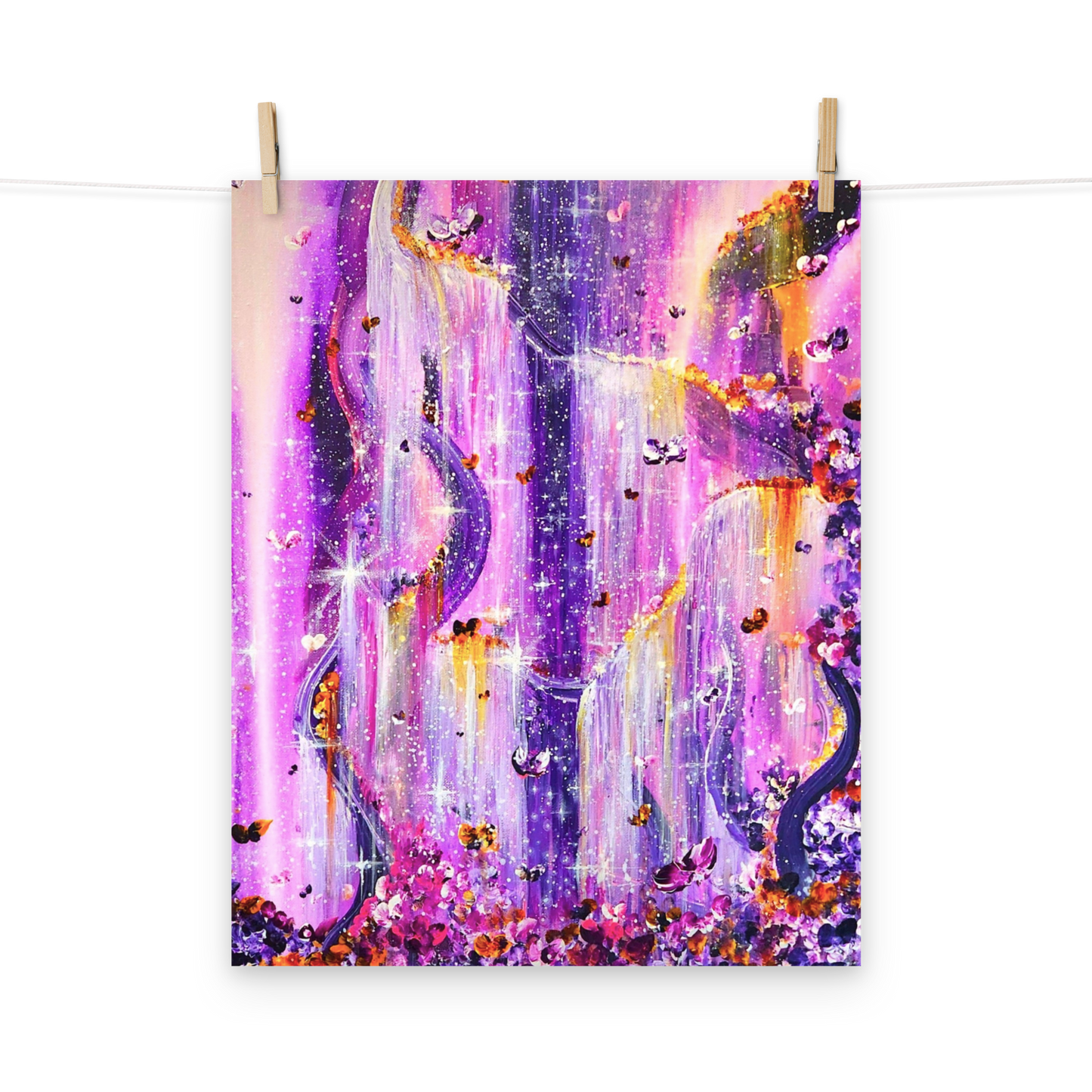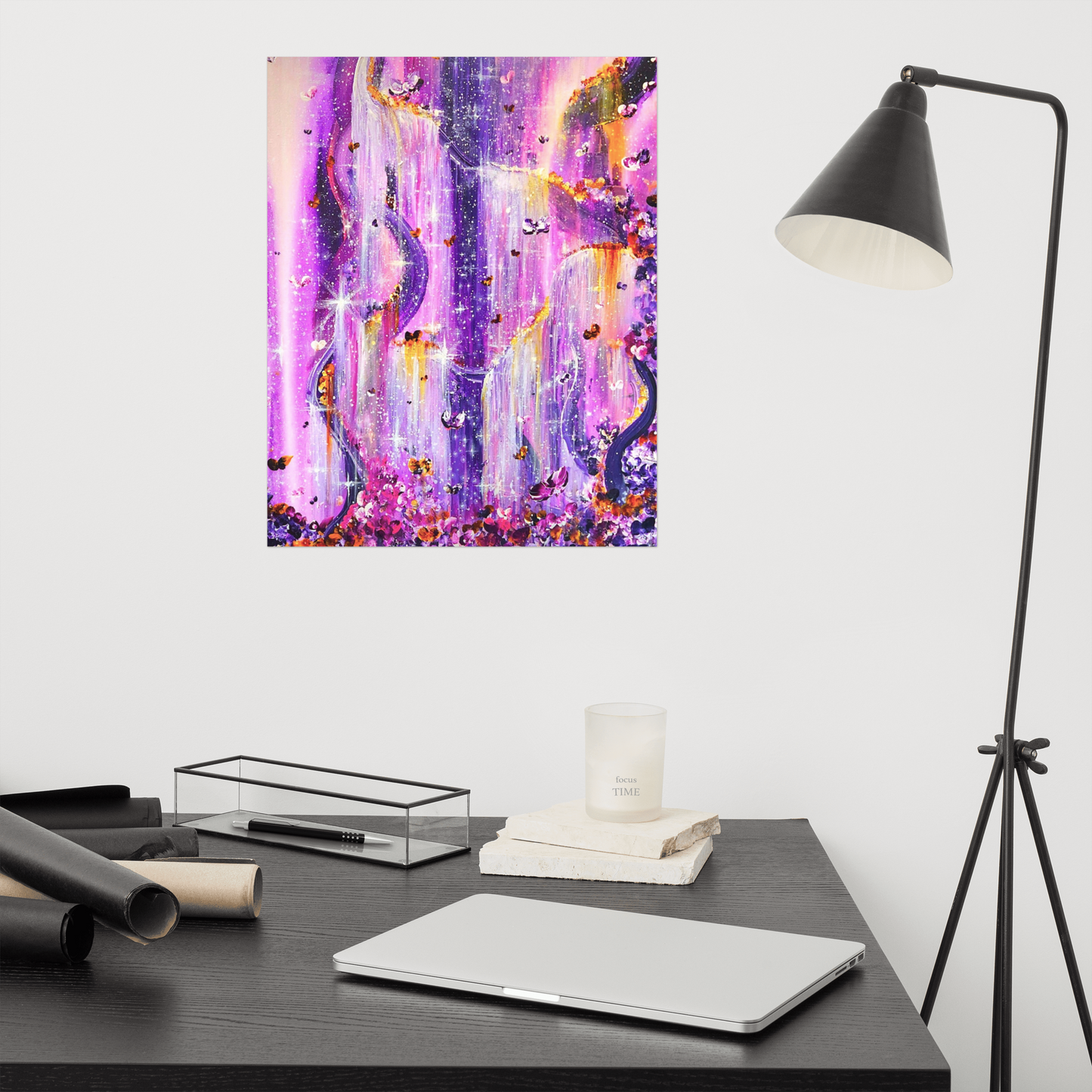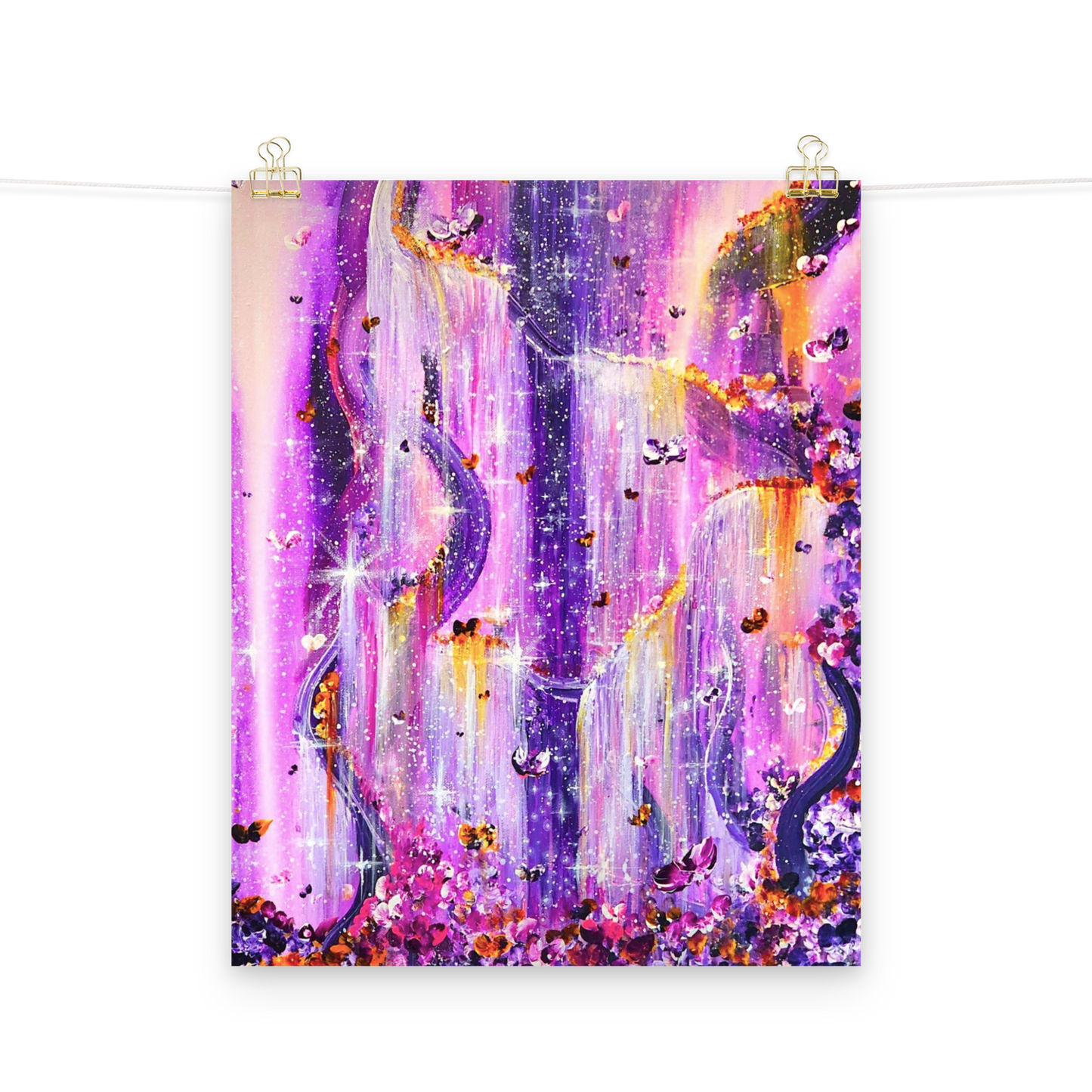StudioTumazi Merchandise
The Self-Made Universe Matte Paper Print - 16" x 20"
The Self-Made Universe Matte Paper Print - 16" x 20"
Couldn't load pickup availability
The Self-Made Universe. How often do we hear the term “self-made”? It’s a common idea that receives little analysis. What exactly is a “self-made” human being? Often, this term functions as a conceptual instrument of isolation: the lone individual tinkering in their garage; the silent scientist working late into the night; the exhausted entrepreneur who somehow becomes a “self-made billionaire.” The list of examples seems endless and yet, social researchers demonstrate time and time again that no single human being is ever truly “self-made” in this isolated sense.
First, think of how many people are involved in the ‘simple’ act of making an online purchase–perhaps from this very Studio! An artist had to paint on a canvas and turn that painting into a print or product. Someone else had to produce those items in a manufacturing warehouse. Other people had to inspect the items for quality assurance. More people had to pick up the items and deliver them to the appropriate address. Beyond all of these people, there are the people who maintain the roads, bridges, and tunnels that the trucks carrying the items need to use. There are the people who invented GPS and online maps for the drivers. Next are the mechanics who ensure those trucks function properly. Then there are the construction workers who built the homes of the people buying the prints; after all, what good is art without walls? In this sense, which self made the ‘simple’ online transaction possible? And which part of the artist-self made all of that possible? Yes, there was a part of the individual artist that produced the art, but everyone else had to make the art possible through their selves. They coded the website and the payment systems. They built and maintained the roads and the trucks and the supply stores. They facilitated customer service.
Indeed, the more we analyze the concept of “self-made,” the more we recognize that living is a process of interconnectedness and interaction. As an entrepreneur myself, I depend on hundreds of strangers to ensure that a ‘simple’ transaction on my website goes smoothly. Yes, as an individual I paint and produce art; but someone else had to make the paint, fit it in tubes, construct the canvases, deliver them to a store for me to buy, and so on. The most basic act of painting requires hundreds of human beings, including the people working in the stores who sell the supplies, their managers, the owners of the building who ensure the lights stay on for shoppers, and many others. We are all interdependent—even the most isolated thinker, builder, or painter requires a community to self-express and self-actualize. A ‘simple’ purchase online takes hundreds of strangers cooperating to facilitate.
The interconnectedness continues when we examine the neuropsychology of our brains. Perhaps the best book on this is Dr. Matthew Lieberman’s Social: Why Our Brains Are Wired to Connect. Professor Lieberman writes that, “The neural link between social and physical pain also ensures that staying socially connected will be a lifelong need, like food and warmth. Given the fact that our brains treat social and physical pain similarly, should we as a society treat social pain differently than we do? We don’t expect someone with a broken leg to “just get over it.” And yet when it comes to the pain of social loss, this is a common response.” Our brains treat social pain (e.g., bullying, exclusion, job loss) the same as physical pain such as a paper cut, broken leg, or stubbed toe because the same areas of the brain are activated. The same is true for social reward and recognition and physical pleasure (e.g., eating desserts).
Think of a doctor treating a patient in the hospital. Their skills and expertise matter, but so does their ‘bedside manner.’ A doctor who fails to activate our brain with social warmth and compassion may be competent, but they are not desirable because they fail to activate the parts of our brain wired for social connection. The same is true of a coworker who is competent yet cold and distant, who may refuse ‘small talk.’ We may respect them, but we do not like them. Curiously, the purpose of small talk is not to exchange information but to establish social connectivity. In linguistics, “small talk” is called phatic communication and its function is to bond humans by establishing interpersonal recognition. It communicates the idea that each person involved recognizes the other as a person, as human, and lays the groundwork for harmony and even solidarity.
This paper print represents these dynamics. Every part of it is connected to every other part and flows through and around each other. The butterflies depend on the stars to guide them, and the stars gave up their chemicals to make butterflies. So, yes, we will always have our uniqueness, our individuality; but we will always be individuals caught up with others because our brains are literally wired that way. Our neurology, our psychology, and even our biology is caught up in the thoughts, feelings, and behaviors of others—and likewise others are caught up in what we are thinking and feeling and doing. As much as we are “self-made” we are always “making a self” with and through others. After all, what is a celebrity if the stadium is empty? What is a billionaire after a boycott? What is a master without a servant?
• Paper thickness: 10.3 mil
• Paper weight: 189 g/m²
• Opacity: 94%
• ISO brightness: 104%
Important: To accurately view the colors and saturation of the products, please make sure your device's display settings are set to "Natural."
Share














